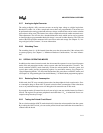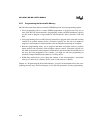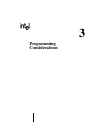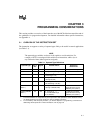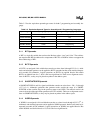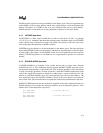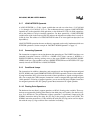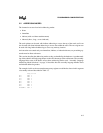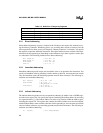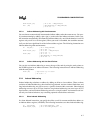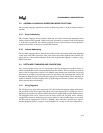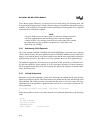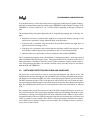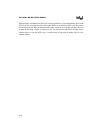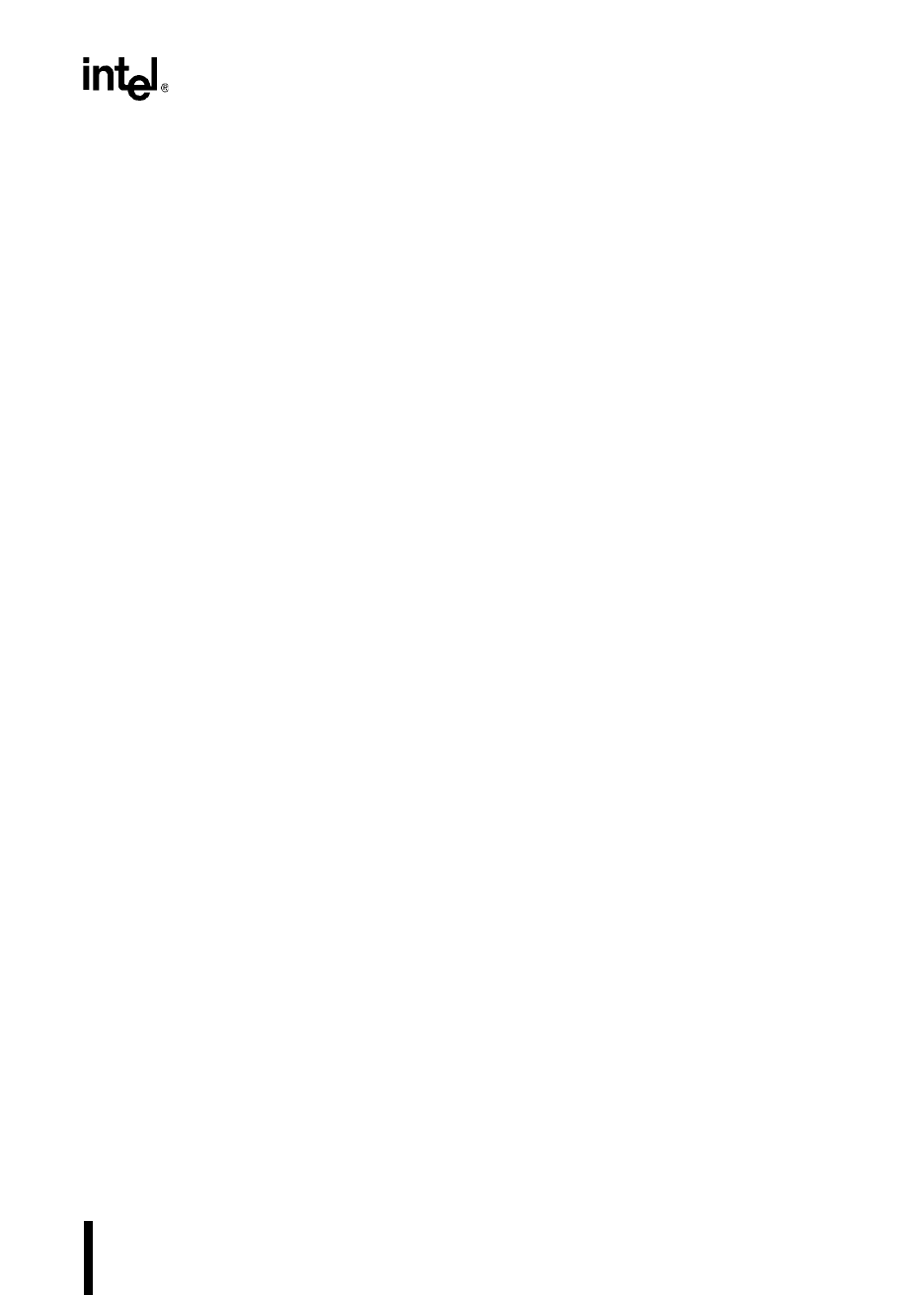
3-5
PROGRAMMING CONSIDERATIONS
3.2 ADDRESSING MODES
The instruction set uses four basic addressing modes:
• direct
• immediate
• indirect (with or without autoincrement)
• indexed (short-, long-, or zero-indexed)
The stack pointer can be used with indirect addressing to access the top of the stack, and it can
also be used with short-indexed addressing to access data within the stack. The zero register can
be used with long-indexed addressing to access any memory location.
An instruction can contain only one immediate, indirect, or indexed reference; any remaining op-
erands must be direct references.
This section describes the addressing modes as they are handled by the hardware. An understand-
ing of these details will help programmers to take full advantage of the architecture. The assembly
language hides some of the details of how these addressing modes work. “Assembly Language
Addressing Mode Selections” on page 3-9 describes how the assembly language handles direct
and indexed addressing modes.
The examples in this section assume that temporary registers are defined as shown in this segment
of assembly code and described in Table 3-3.
Oseg at 1ch
AL: DSB 1
BL: DSB 1
CL: DSB 1
DL: DSB 1
AX: DSW 1
BX: DSW 1
CX: DSW 1
DX: DSW 1
THISVAR: DSW 1



